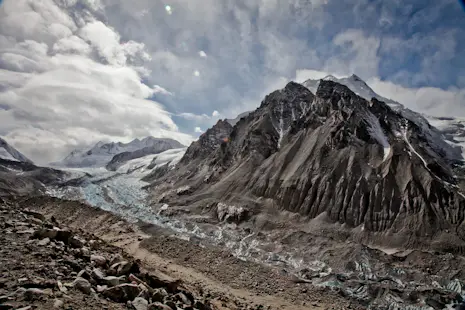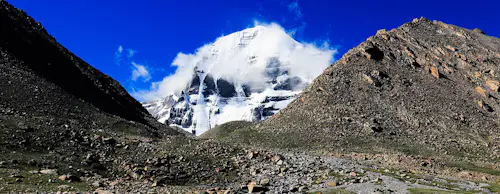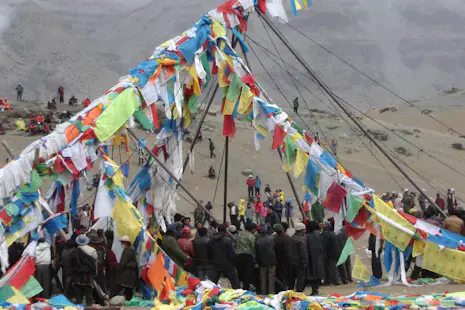Hiking in the Chinese Himalayas: Top Outdoor Adventures Awaiting You
4.70
(14 reviews)
Discover the unspoiled nature, majestic mountains and incredible scenery of the Himalaya’s northern slopes. !
Take a few weeks or an entire month off to explore this remote and incredibly beautiful part of the world. See the ancient sites, climb into the foothills of the beautiful Himalayas and experience the Chinese wilderness. “Compare and book a certified guide for your Hiking trip with Explore-Share.com: 1500+ guides, 70+ countries and more than 8000 different programs to choose from. Take a pick from our Hiking selection. The mountains are calling!
Top hiking trips | China
FAQs: Hiking in China
What should I know about Hiking China?
There are plenty of reasons to come and visit the Chinese Himalayas. Hiking in Nyalam is just one of them. When in this borderland region, take time to explore the Lalungla Pass and the Brahmaputra River, camping in the heart of the Himalayan foothills.
From here, continue on to the base of Mount Kailash and explore the shores of Lake Mansarovar, heading through the Dayumla pass. Incredible views await at every turn.
Trekking up to Dolma-la Pass (5,636 m) is also a treat and the views from there are even better than before, something you will find hard to believe at the start of the trek, but is assuredly true.
Heading to the Chinese Himalayas does require some careful planning. In order to get an entry visa you must have a government-approved guide and detailed itinerary of where you will stay. Without a visa, your entry to the region will be barred.
Why should I choose China for my Hiking adventure?
Stunning scenery
The northern slopes of the Himalayas are just as breathtakingly beautiful as the southern ones. On the Chinese side of the Himalayas, snow-capped peaks, deep valleys and pristine lakes dot the landscape. The combination of mountain splendor and rugged terrain of the high plains is quite special.
Get off the beaten path
As trekking in Nepal becomes increasingly fashionable, it’s hard to truly feel that you are out in the wilderness there. The Chinese side of the Himalayas feel more remote, with more rugged wilderness to discover and fewer tourist traps and crowds getting in the way of the most incredible views.
Come for the culture
The Tibetan culture is worth seeing as well on the Chinese side of the Himalayas. Though Chinese government officials monitor visitors’ itineraries quite closely, there is still the option to see how the tibetan people lived and thrived here for so many centuries. Cultural visits to the city of Lhasa are highly recommended as is trying the local cuisine.
What can I expect from the weather during my Hiking trip in China?
During the summer, average daily temperatures in the Chinese Himalayas range from 11 ºC to 15 ºC and tend to decrease as you gain elevation. The summer is also the wettest time of the year in the Chinese Himalayas with an average of 60 to 150 millimeters of rain falling each month.
How can I get to China?
In spite of sitting on the Chinese side of the border, many hiking trips to the Chinese Himalayas begin with a flight into the international airport in Kathmandu (KTM) in Nepal. From here, your guide will arrange transport across the border and on to the starting point of your trip.
Which language is predominantly spoken in the China region?
Mandarin, Tibetan
What's the country code for the China region?
+86
What currency is accepted around China?
Renminbi (CMY)
When is the best time to travel to China for Hiking?
June to September
Join our newsletter!
Stay up-to-date on the best adventures.




